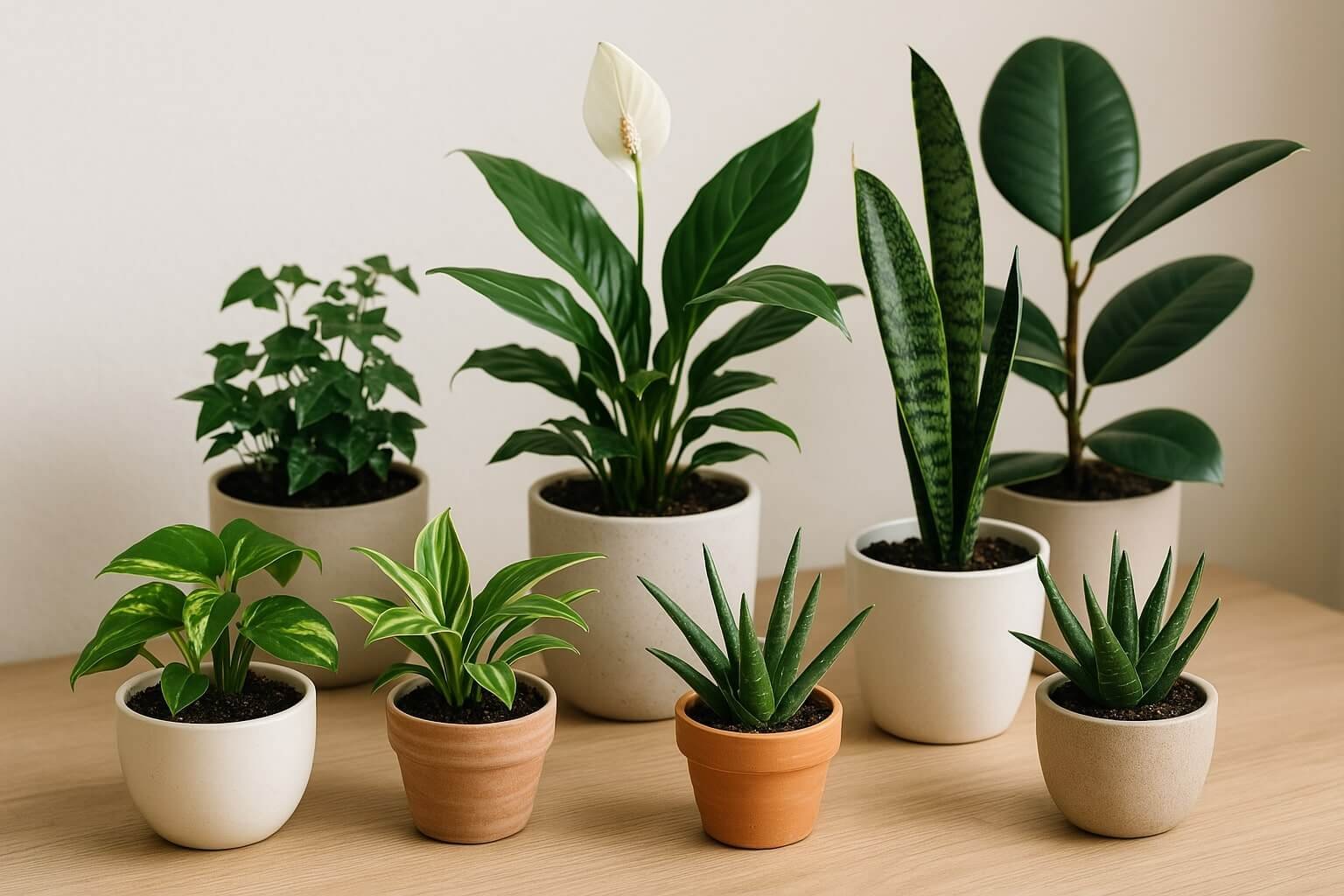Why Indoor Air Purification Matters
Indoor environments often trap pollutants like dust, smoke, and toxins from synthetic materials. Long exposure can lead to:
- Headaches
- Fatigue
- Allergies
- Respiratory problems
NASA’s Clean Air Study showed that certain plants naturally cleanse indoor air by removing harmful toxins like formaldehyde, benzene, and carbon monoxide. They’re nature’s own air purifiers!
🌱 Top Indoor Small Plants That Purify Air
1. Spider Plant (Chlorophytum comosum)
- Toxins Removed: Formaldehyde, carbon monoxide, xylene
- Care: Water once a week; bright, indirect light
- Why It’s Great: Easy for beginners, pet-friendly, and quick to multiply!
2. Peace Lily (Spathiphyllum)
- Toxins Removed: Ammonia, benzene, formaldehyde
- Care: Weekly watering; low light tolerance
- Bonus: Beautiful white blooms add elegance to any room.
3. Snake Plant (Sansevieria trifasciata)
- Toxins Removed: Formaldehyde, nitrogen oxides, benzene
- Care: Very low maintenance; can survive in dark corners
- Fun Fact: It releases oxygen even at night—perfect for bedrooms.
4. Aloe Vera
- Toxins Removed: Formaldehyde and benzene from cleaning products
- Care: Minimal watering; lots of sunlight
- Benefits: Heals skin, purifies air—it’s a multitasker!
5. English Ivy (Hedera helix)
- Toxins Removed: Mold particles, formaldehyde
- Care: Prefers cool temperatures; moderate light
- Use Tip: Ideal for hanging pots or shelves.
6. Pothos (Epipremnum aureum)
- Toxins Removed: Carbon monoxide, formaldehyde, benzene
- Care: Extremely adaptable; low light friendly
- Style Points: Lush vines that cascade—perfect for wall décor.
7. Rubber Plant (Ficus elastica)
- Toxins Removed: Formaldehyde, airborne bacteria
- Care: Water when the soil dries; loves filtered light
- Growth Tip: Keep pruning for compact, stylish growth.
🪴 Benefits of Small Air-Purifying Plants
- Compact Design: Perfect for tight spaces—desks, shelves, kitchen counters.
- Low Maintenance: Most require minimal watering and light.
- Stylish Aesthetic: Add texture, vibrancy, and calm to any room.
- Wellness Boost: Natural detox, stress reduction, improved sleep quality.
🧼 Styling Tips for Indoor Plant Décor
- Use terracotta or ceramic planters for earthy charm.
- Style in clusters of varying heights for visual appeal.
- Add hanging plants to save floor space and create cozy corners.
- Match leaf textures with room themes—e.g., sleek snake plants in modern rooms.
🌟 Caring for Indoor Small Plants Made Simple
- Lighting Matters: Most air-purifying plants thrive in bright, indirect light.
- Water Wisely: Overwatering is the biggest mistake. Use moisture meters or a finger test!
- Clean Leaves: Dust can block photosynthesis. Gently wipe leaves monthly.
- Rotate Plants: Give all sides some light exposure for balanced growth.
- Feed Occasionally: Use indoor plant fertilizer once every 1–2 months.
❓ Frequently Asked Questions (SEO-Optimized)
Q1: Which small indoor plant is best for purifying air in bedrooms?
A: The Snake Plant is ideal for bedrooms—it releases oxygen at night and removes common indoor toxins.
Q2: Can small indoor plants reduce mold and allergens?
A: Yes! English Ivy is known for reducing airborne mold particles and allergens—great for bathrooms.
Q3: Are air-purifying plants safe for pets?
A: Some, like Spider Plants, are non-toxic to cats and dogs. But others, like Peace Lilies, should be kept away from pets.
Q4: How often should I water indoor small plants?
A: Most need watering once a week. Check soil moisture to avoid overwatering.
Q5: Do indoor plants really clean the air?
A: Yes! Studies show indoor plants like Peace Lily and Aloe Vera absorb harmful chemicals and improve air quality naturally.





